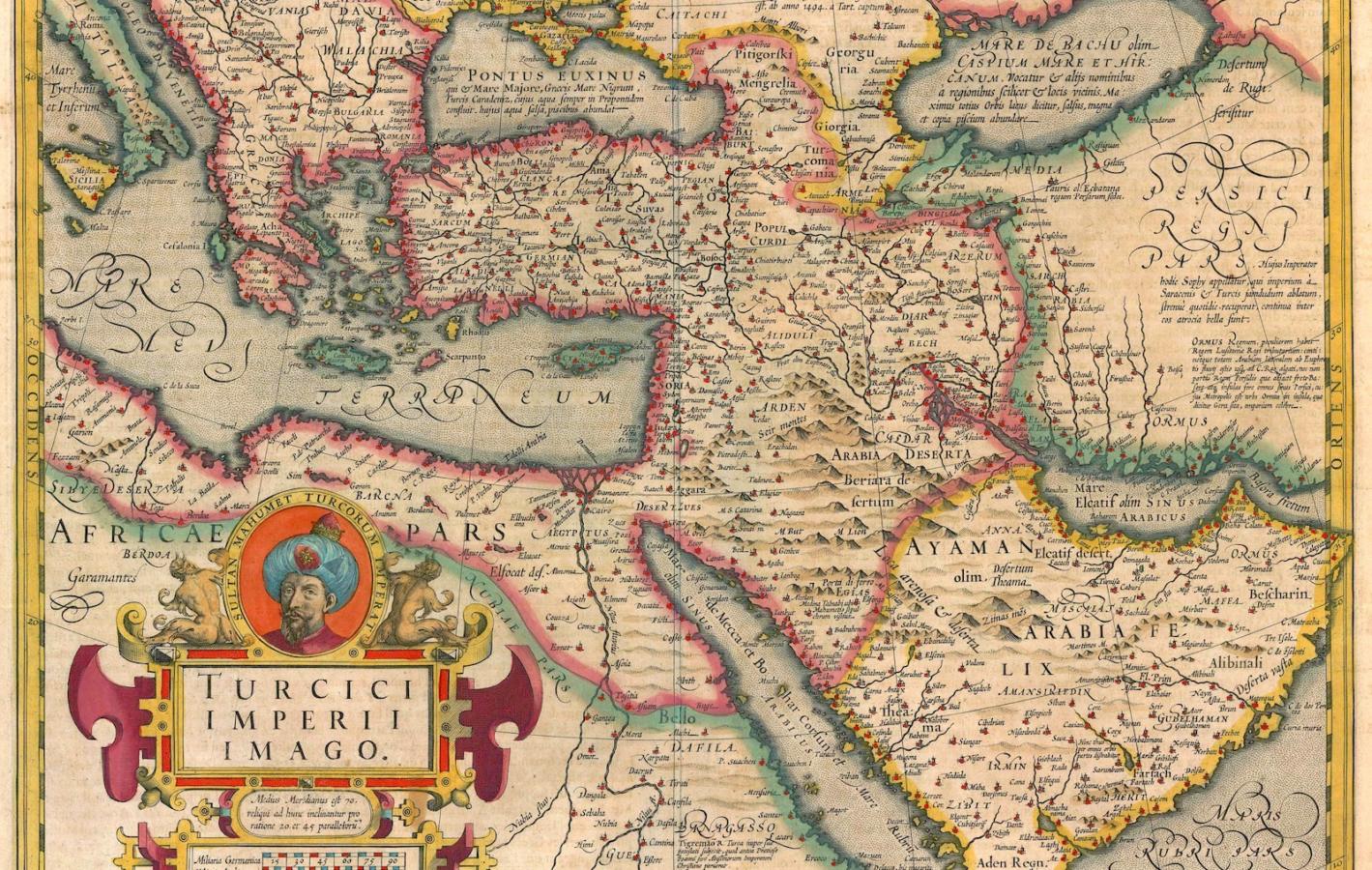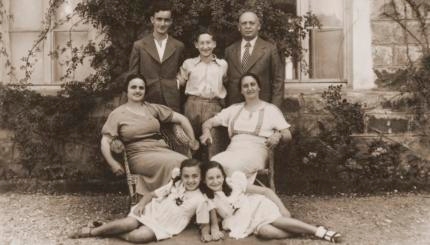The Ottomans began to emerge as a great political and military power from the early 14th century. Uthman, founder of a dynasty, came from a small Turkish principality, which in time grew into a vast empire. The swords of his successors brought to an end the centuries‑long Greek influence in the south of the Mediterranean basin, replacing it with Muslim domination. Extending deep into the European continent, Ottoman expansion turned Vienna into an outpost of Christendom.
The Greek‑speaking Jewish communities, which the immigrants from Spain and Portugal later called “Romaniots” or “Gregos,” were all under Ottoman rule at the time of the fall of Constantinople — renamed Istanbul — in 1453. The Arabic‑speaking Jews (“Mustarabs” in the idiom of the Iberian refugees), were the other important indigenous group. They lived in “Arabistan”–countries conquered mainly during the reign of Selim I (1512‑1520) and of his son Suleiman the Magnificent (1520‑1566). For all the Jews the conquest was a salvation, as their situation in the 14th and 15th centuries under Byzantine and Mamluk rule had been extremely difficult.
Haven for Jewish Refugees from Spain and Portugal
Then, in the wake of the expulsion from Spain (1492) and the forced conversion in Portugal (1497), tens of thousands of Iberian Jews arrived in Ottoman territories. As all that was required of them was the payment of a poll‑tax and acknowledgement of’ the superiority of Islam, the empire became a haven for these refugees.
From early in the 16th century, the Jewish community in the Ottoman Empire became the largest in the world. Constantinople and Salonika each had a community of approximately 20,000 people. Immigration from the Iberian peninsula, arriving in several waves throughout the 16th century, also transformed the character of Ottoman Jewry. Far more numerous than the local Jews, the Spaniards and the Portuguese soon submerged the Romaniots, and the indigenous population was assimilated into the culture and community of the new immigrants.
After the conquest of Constantinople, Muhammad II, wishing to aggrandize the city and make it into a capital befitting a great empire, brought into it many people from the provinces. This migration affected the Jewish community and changed the character it had acquired during the Byzantine period.
The economic and religious situation was indeed ameliorated; but many of the older Romaniot congregations disappeared, their memory preserved only in the names of several synagogues in Istanbul. The congregations which replaced them in the capital as well as in Salonika or in Tiriya in western Anatolia, were purely Spanish.
Jewish Prosperity and Cultural Blossoming
Within the communities, the congregations were organized according to the geographic origin of their members. Grouped around synagogues, the Jewish organizations provided all the religious, legal, educational, and social services, thus creating an almost autonomous society. Until the end of the 16th century, these institutions were very flexible, allowing significant mobility within them. The geographic origin of its members soon lost its importance, and the development of the congregation was determined by power struggles between rich individuals or groups with conflicting interests.
Throughout the 16th century, the Jews in the Ottoman Empire enjoyed remarkable prosperity. The empire was rapidly expanding, and economic demand rose accordingly. Thus the Jewish population could easily enter into trade with Christian Europe, and into industries such as wool weaving that were only then beginning to evolve. Under the leadership of figures like Don Joseph Nasi and Solomon ibn Yaish, they could take advantage of their worldwide network of family connections and their knowledge of European affairs in order to promote the concerns of the Sublime Porte, as well as to protect their personal interests and those of their community.
This was also a time of cultural blossoming: Hebrew law was enriched by Joseph Caro’s Shulchan Aruch (the “Prepared Table”) which was to become the authoritative code for the entire Jewish nation, while from Safed in Palestine emerged the Lurianic Kabbalah of Ha-Ari, one of the most influential trends in Jewish mysticism. It seems that these communities of exiles, suddenly liberated from the danger of extinction, could give expression to an outburst of cultural forces which had been stifled by centuries of persecution.
Reprinted with permission from Eli Barnavi’s A Historical Atlas of the Jewish People, published by Schocken Books.
Kabbalah
Pronounced: kah-bah-LAH, sometimes kuh-BAHL-uh, Origin: Hebrew, Jewish mysticism.


